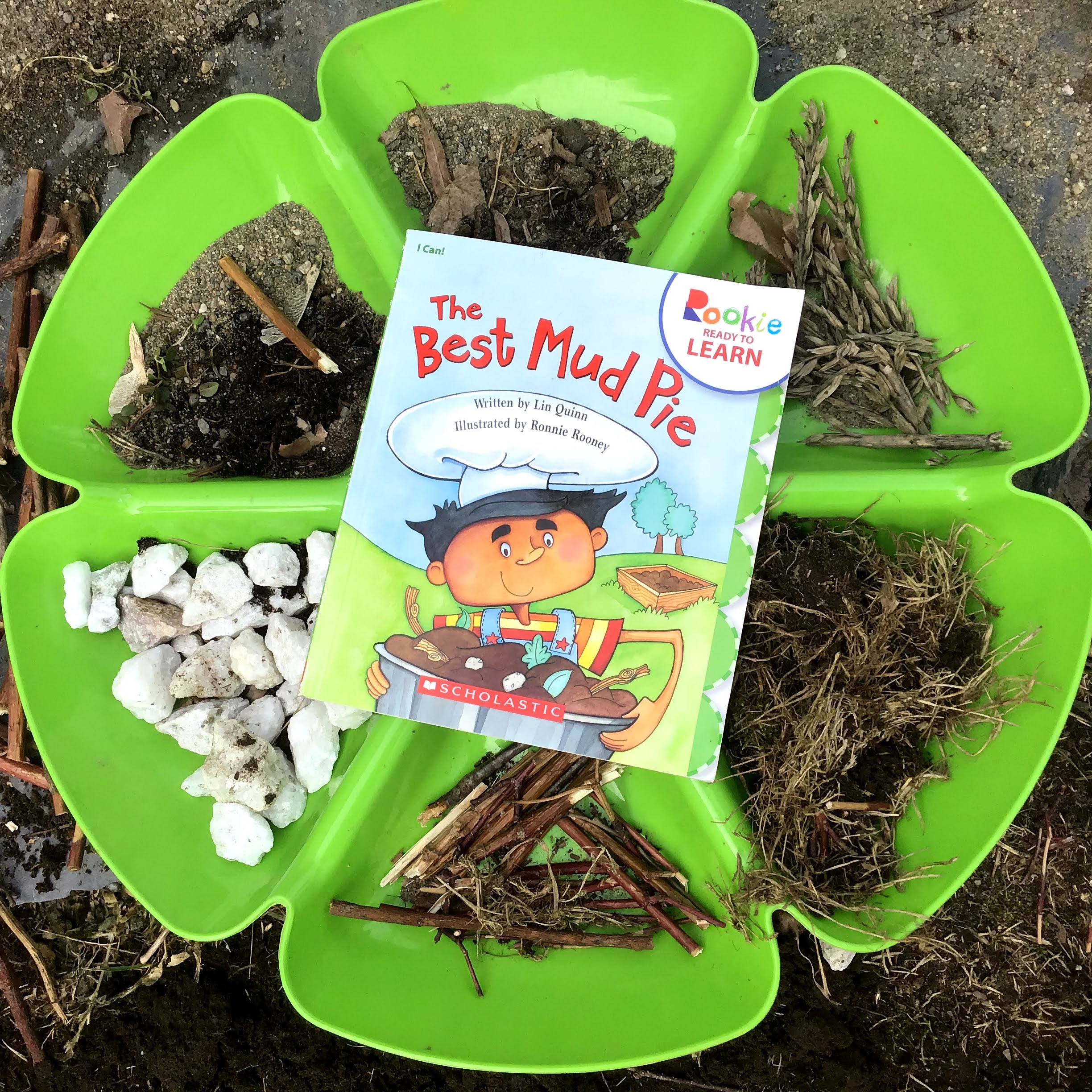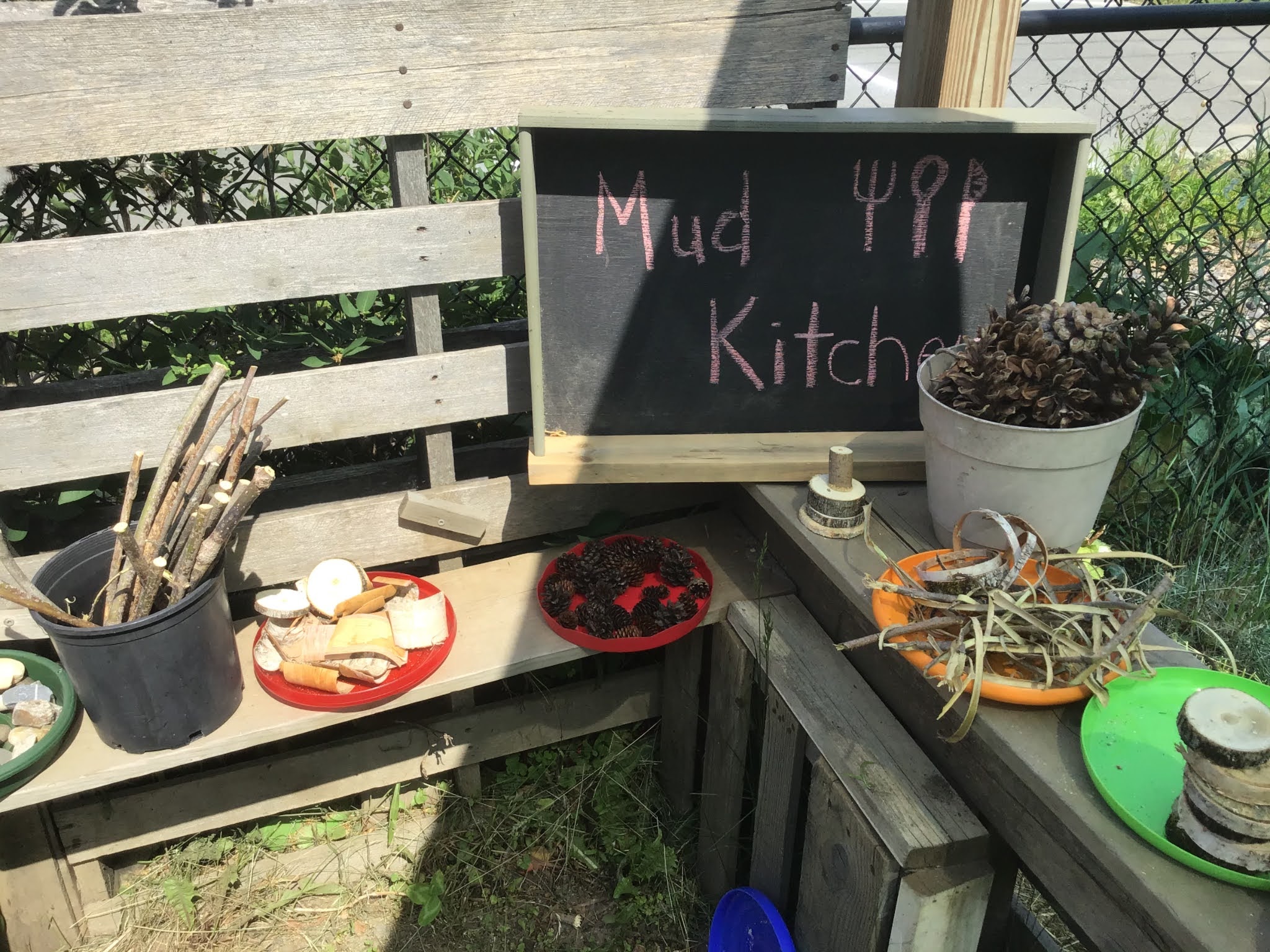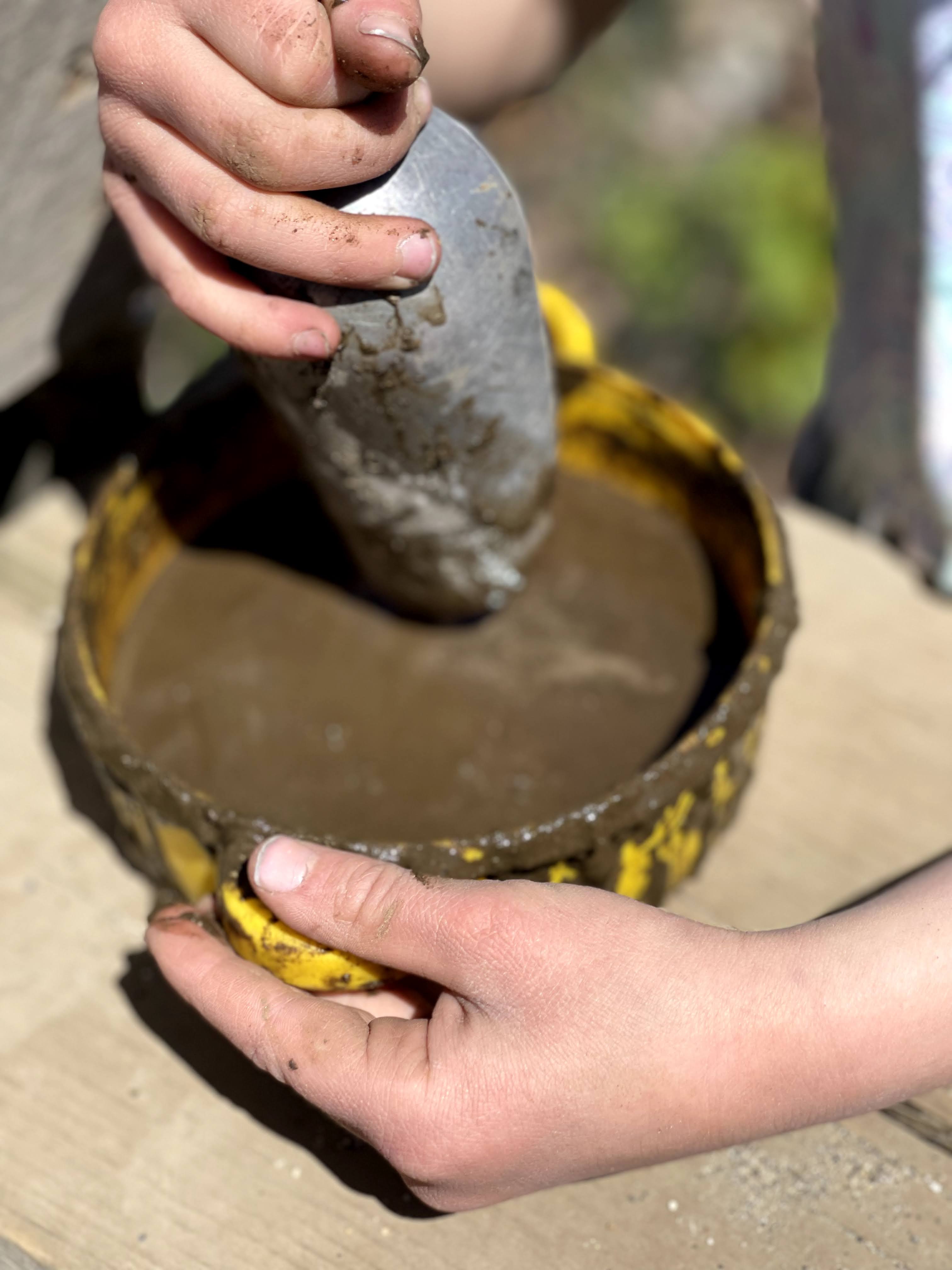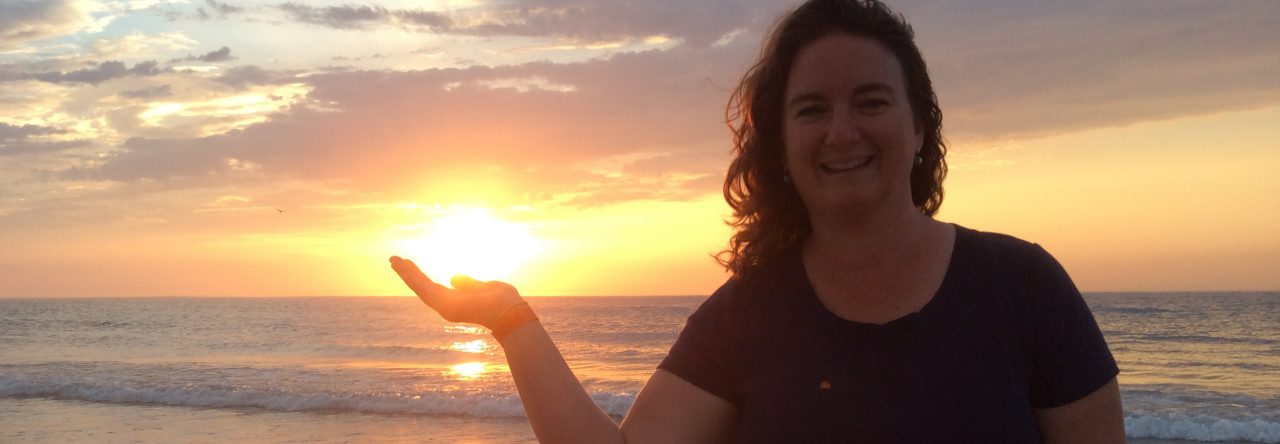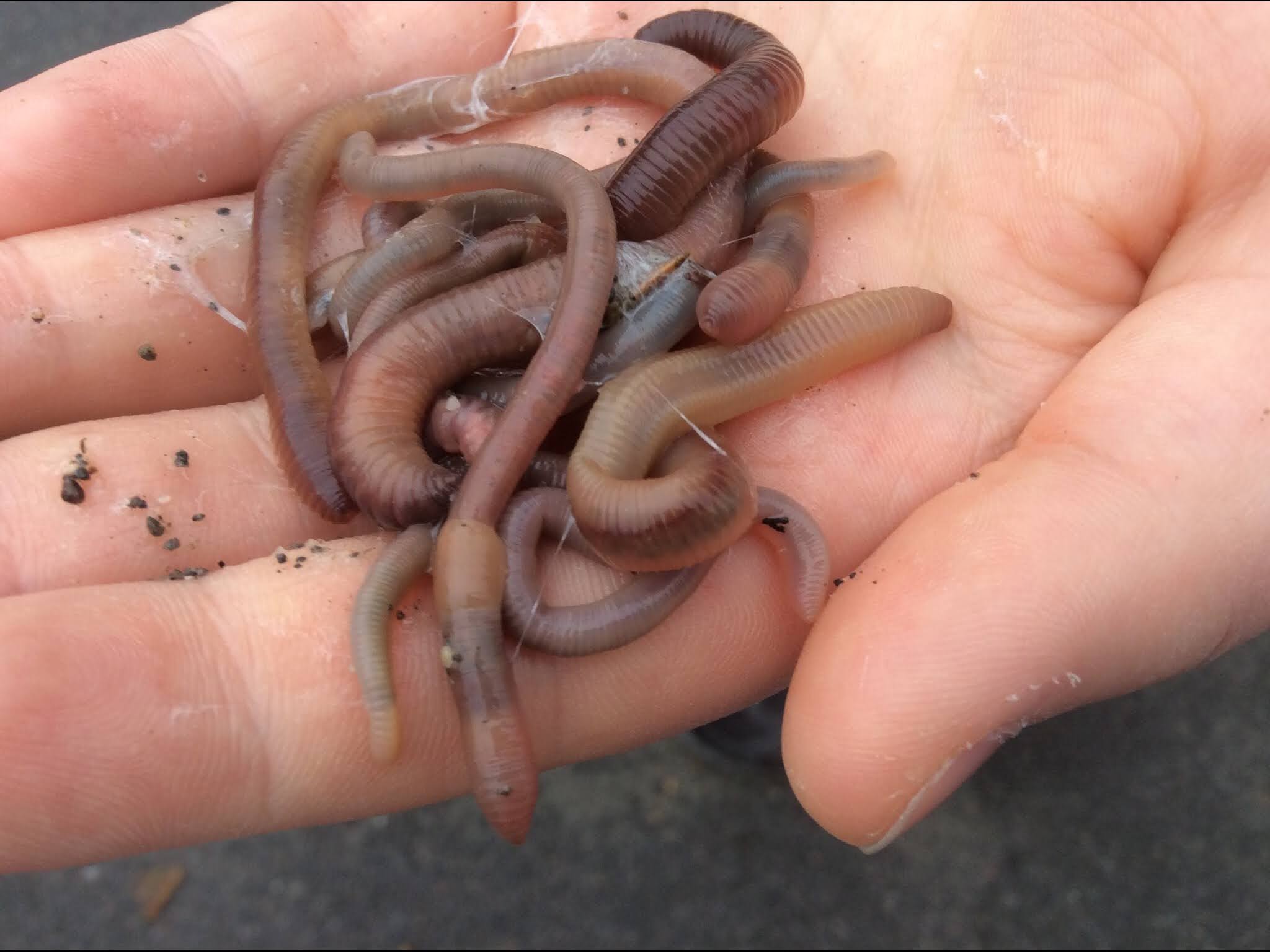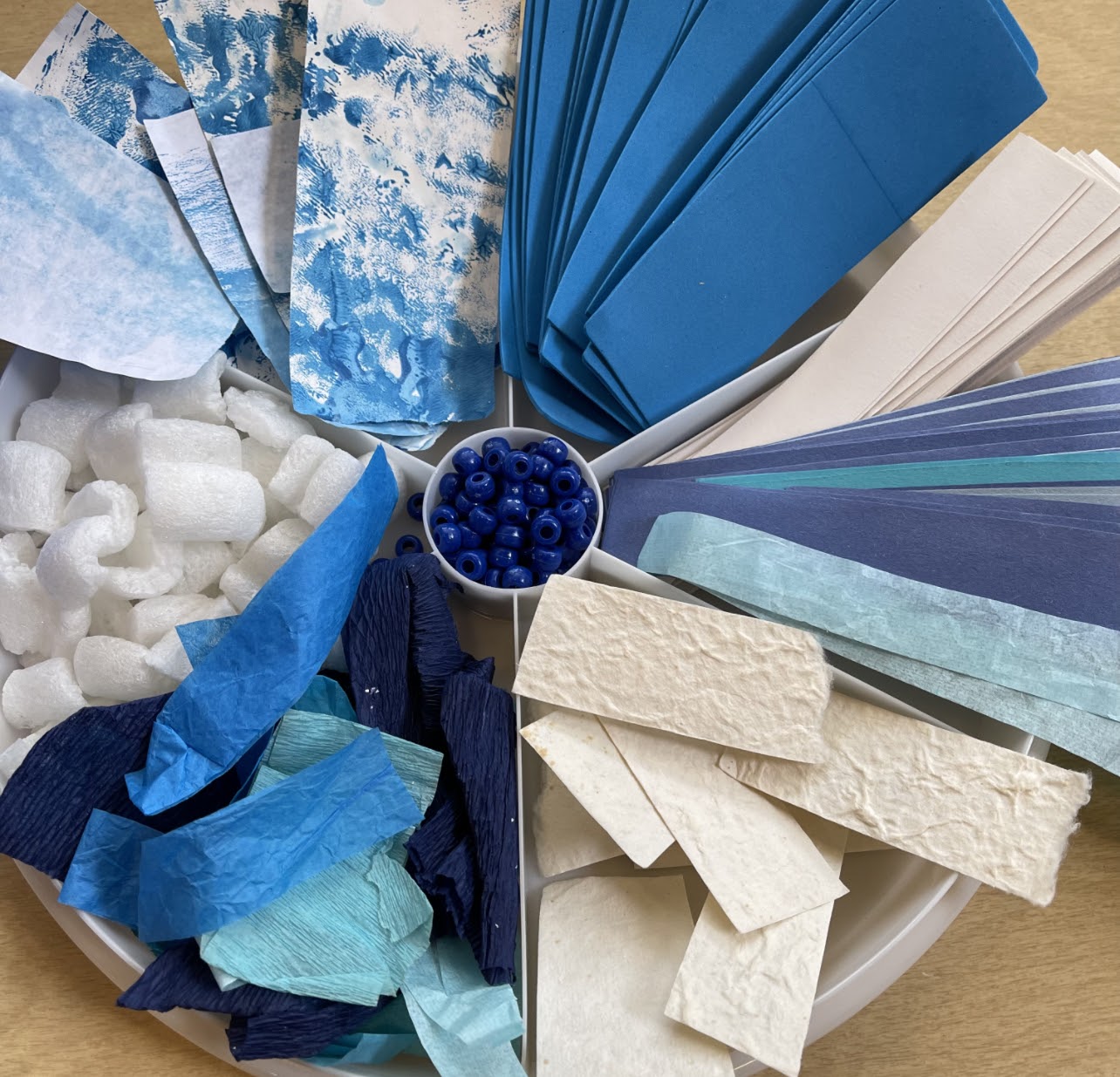I know that mud can feel like a HUGE barrier in an outdoor classroom. So NOW is the time to think through the obstacles. (Actually well before mud season is even more ideal, but let’s take action NOW.)
Set up a time to talk with your coworkers and share information with currently enrolled families so that your muddy play area can be a YES space. Children thrive with daily outdoor time, so canceling outside play time for the entire mud season is NOT an option. Mud builds healthy immune systems, supports physical and cognitive development, and so much more.
I have compiled a FREE “Mud Play Resource” to hopefully make mud easier this year! In this resource you will find links to:
- Mud Play articles to share with families
- Mud Curriculum Ideas for teachers
- Mud Kitchen Resources for teachers
- Children’s Books about MUD!

Three steps for embracing mud play! (And then three cheers for bringing back mud pies!)
Muddy Mindset for Staff ~ even BEFORE mud season, schedule a conversation with your teaching team about their perception of mud play. Come to a consensus about your program’s ‘mud rules’ and ensure that children hear the same message from all staff. Perhaps pre-read a Mud Play article and talk about the Pros & Cons at a staff meeting. {During mud season, continue the conversation, document the children’s learning and JOY with mud. Then revisit your ‘mud rules’ after mud season. Step by step is how we make change.}
Muddy Solutions – if you have extended ‘mud seasons’ at the beginning and end of winter….consider investing in Muddy Buddy types of suits, have a place to hang them to dry, and a system for drying boots. Having functional systems for dealing with muddy gear when coming in and how to manage so the indoors space isn’t too hard to clean. {Would fundraising or grant writing make gear more accessible for your children? Think NOW about how to set yourself up for success in the future.}
Mud Chat with Families ~ even BEFORE mud season, prepare families for what to expect. Remind them of your messy clothes policy, share mud articles about why it’s valuable to play outdoors even when it’s muddy, get their support in sending in extra dry clothes, and build in an understanding of what you need for this season to be successful. We need to work in partnership with our families. If families have a bunch more laundry as a result of being in your classroom, they are going to understand the WHY.
